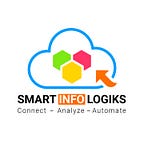Are you an Established Business Owner? Know Your Business Performance Metrics
Business KPIs are defined based on business nature. For instance, running an eCommerce business requires analyzing new customers’ orders vs returning customer orders, the shopping cart abandoned rate, which products are bought, or how many people downloaded your application. If you’re into a retail business, you must know about the average customer spending, sell-through rate, stock turnover rate, etc.
Contrary to this, every business owner must keep in mind a few KPIs that can help them know their business perspective and discover growth opportunities.
Cash Flow: The cash flow of your account is a vital indicator of your business’s health. A real-time cash flow dashboard can help you track business expenses and alarms about negative and positive cashflows. Additionally; it helps you figure out the adjustments that need to be done to balance your cash flow.
Net & Gross Profit Margin: A crucial aspect to understand is whether your business is making a profit or not. Gross profit margin is not responsible for additional overheads related to sales.
- Gross Profit Margin= [Revenue — Cost/ Revenue] x100
Gross margin pulls the ratio between the production cost and revenue. It displays whether production cost is expensive or not. This will you determine whether to increase or decrease the selling price. Gross margin is not responsible for interests, operating costs, depreciation or any other cash outflows. Here, the net profit margin comes into play.
- Net Profit Margin= [(Revenue — Cost) — Other Expenses) / Revenue] x100
Net profit margin is all about profitability. For a business to make a profit, the net margin must be in the positive range. If the net profit margin is less than 15% then you need to seriously focus on business.
Here, the finance dashboard can come to your rescue as it will help you visualize all your financial data in one place. This will help track your expenses, costs, revenue, etc., on a real-time basis anytime, anywhere.
Sales Revenue: Sales revenue dashboard can help you figure out how your sales team is performing. What is the lead conversion rate? You can simultaneously view your monthly sales rate, who are your top customers, and what’s your ROI on sales. Spotting slow and busy month through sales KP help in creating an apt strategy every month. It will also help in controlling the cash flow to make certain expenses during the slow business.
Hence, the sales dashboard is an effective avenue to track your sales pipeline. Now, easily view your leads, prospects, opportunities, highly esteemed customers, and sales staff performance. Constant tracking can help you better analyze the sales bottlenecks as well as enhance your sales strategy.
Customer Retention and Loyalty: It’s an essential KPI for every business owner to understand. How is your product being appreciated by the customers? How often do they refer to your product or your brand? Customer surveys, product purchase analysis, etc. can help you analyze customer satisfaction levels. You can even modify your strategy by understanding the customer retention KPI to lure high-end customers and retain them for a longer period, which can effectively influence your CLV.
CLV (Customer Lifetime Value): CLV is the value a customer brings to your business throughout a company’s life cycle. Understandably, it’s an expensive barter to acquire a new customer than to retain existing ones. Hence, extending your CLV is essential for a healthy business model and customer retention strategy. Apart from this, CLV can also help you focus on the marketing channels that provide you with high-value customers.
- Historical CLV: CLV (Historic)= (Transactio1] + Transaction2 + Transaction3…+TransactionN) X AGM (Average Gross Margin)
Calculating CLV based on net profit delivers you the actual profit a customer is contributing to your store. This includes customer service costs, cost of returns, acquisition costs, cost of marketing tools, etc. Gross margin CLV will provide you with a comprehensive insight into the profitability of your customers. For instance, if your customer is disbursing Rupees. 12,00/- a month for availing a service from you and you’ve been successful in retaining your customer for 5 years, then the historic CLV of that customer accounts for about Rs. 72,000/-
2. Predictive CLV: Predictive CLV obtains a more precise and accurate value of CLV by predicting the total value a customer will be giving to your store over a lifetime. “Predictive CLV is the NPV (net present value) of the sum of all future revenues from a customer, deducting all costs linked with that customer.” It’s the predictive CLV useful in future understanding of how valuable your customers are. The more accurate you are, the more powerful your marketing will be.
- Customer Acquisition Cost (CAC): CAC is associated with CLV. CAC is the total marketing cost divided by the number of customers acquired during that time. Generally; CAC should not surpass ⅓ of CLV.
For customer loyalty, retain a customer care dashboard to add more value that can greatly influence your customer satisfaction, thereby boosting CLV. It’s essential to interact with your customers regularly and work towards accelerating the customer satisfaction index. Availing the option to raise the ticket for any concern that customers are going through, monitoring them, and resolving the issues will help enhance their lifetime with you. This will further assist you in analyzing your support staff’s performance.
As a business owner, you must track all these KPIs on a real-time basis using advanced analytics, thereby helping your business to stand out in the crowd. Without an effective tool, keeping track of all the KPIs can be time and cost-consuming.
If you have any such requirements, please feel free to visit at www.smartinfologiks.com
